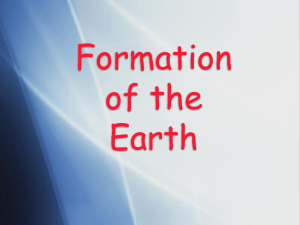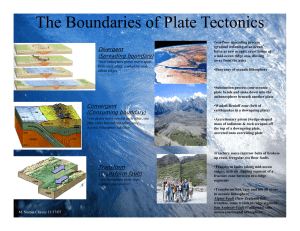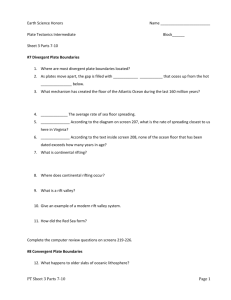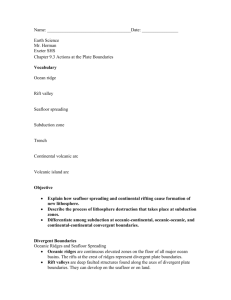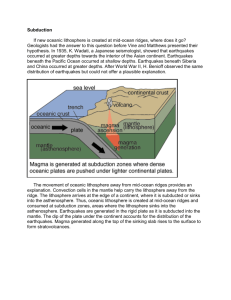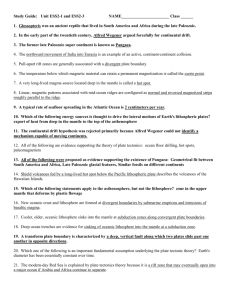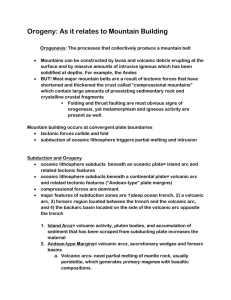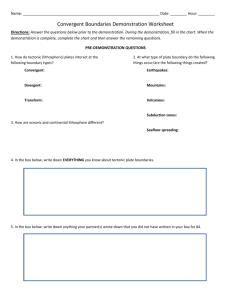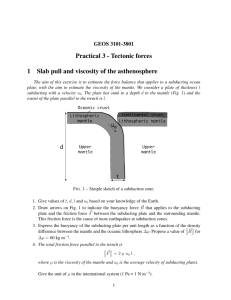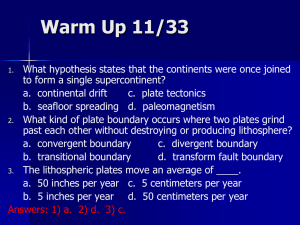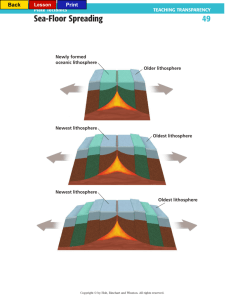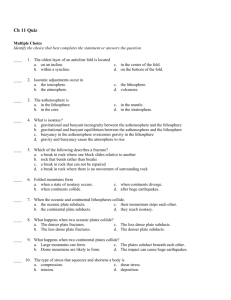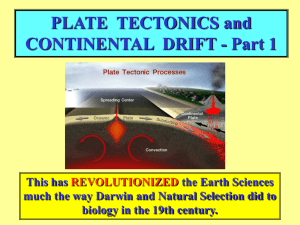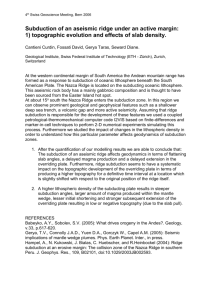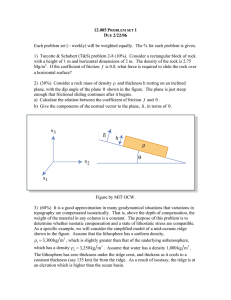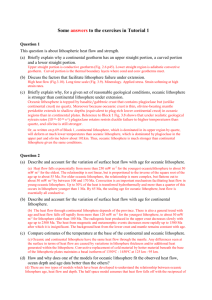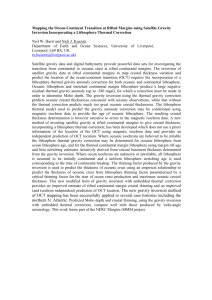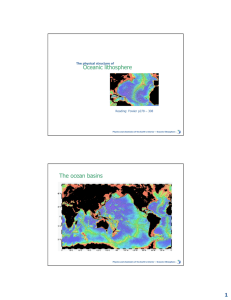Plate tectonics cont
advertisement
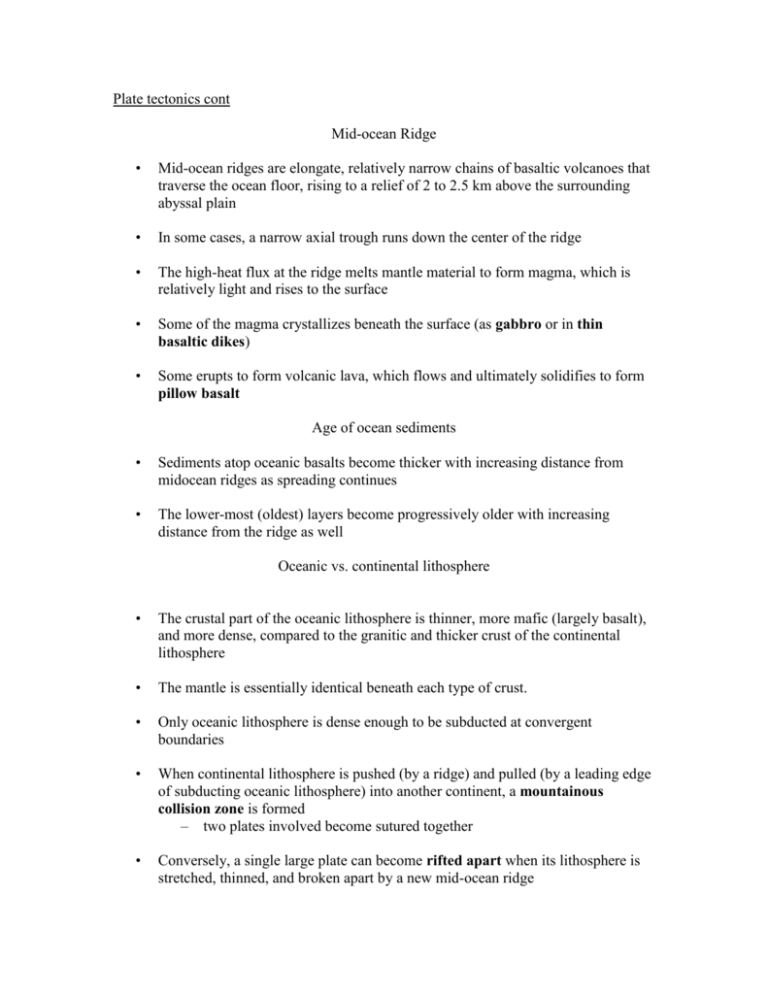
Plate tectonics cont Mid-ocean Ridge • Mid-ocean ridges are elongate, relatively narrow chains of basaltic volcanoes that traverse the ocean floor, rising to a relief of 2 to 2.5 km above the surrounding abyssal plain • In some cases, a narrow axial trough runs down the center of the ridge • The high-heat flux at the ridge melts mantle material to form magma, which is relatively light and rises to the surface • Some of the magma crystallizes beneath the surface (as gabbro or in thin basaltic dikes) • Some erupts to form volcanic lava, which flows and ultimately solidifies to form pillow basalt Age of ocean sediments • Sediments atop oceanic basalts become thicker with increasing distance from midocean ridges as spreading continues • The lower-most (oldest) layers become progressively older with increasing distance from the ridge as well Oceanic vs. continental lithosphere • The crustal part of the oceanic lithosphere is thinner, more mafic (largely basalt), and more dense, compared to the granitic and thicker crust of the continental lithosphere • The mantle is essentially identical beneath each type of crust. • Only oceanic lithosphere is dense enough to be subducted at convergent boundaries • When continental lithosphere is pushed (by a ridge) and pulled (by a leading edge of subducting oceanic lithosphere) into another continent, a mountainous collision zone is formed – two plates involved become sutured together • Conversely, a single large plate can become rifted apart when its lithosphere is stretched, thinned, and broken apart by a new mid-ocean ridge Ocean trenches • Deep-ocean trenches are elongate arcs where ocean depths reach down to as much as 12 km • The trenches border chains of volcanoes at subduction zones • A seamount chain is an elongate series of former volcanic islands that have subsided below sea level. • Sediments scrape off the subducting plate to form an accretionary prism at the edge of the overriding plate • Behind the prism, melting associated with the subducting plate produces either a volcanic continental arc or a volcanic island arc Subduction nec. on non-expanding earth • The introduction of new crust at the mantle causes subduction to be a topological necessity. Unless the Earth expands (or its shape is dramatically altered), surface area remains constant • Gravity prevents rocks from breaking off at the surface and floating into space, so any new surficial material must be balanced by a loss of surficial material through subduction.
